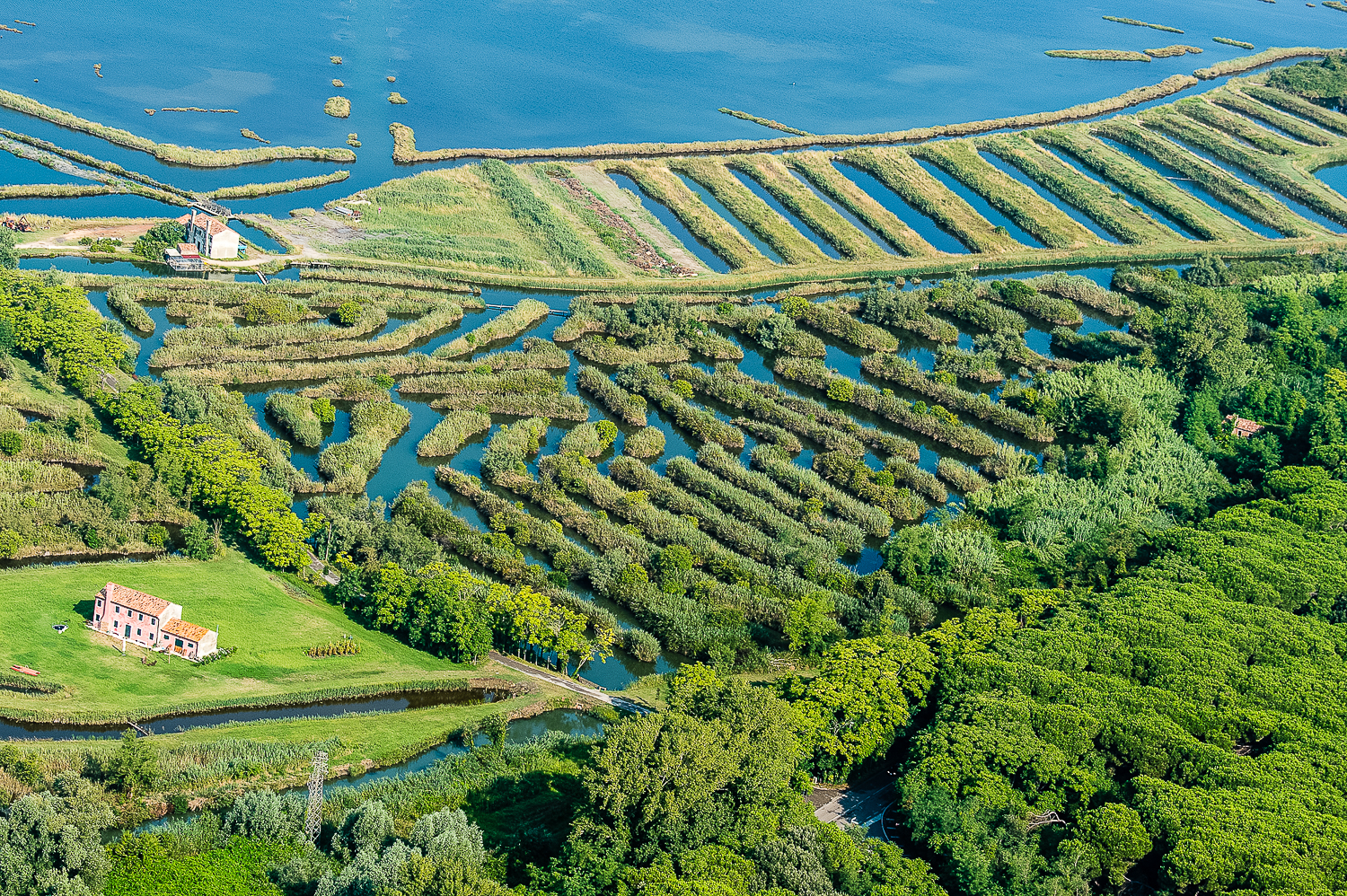
WHAT TO SEE IN ROSOLINA AND THE PO DELTA
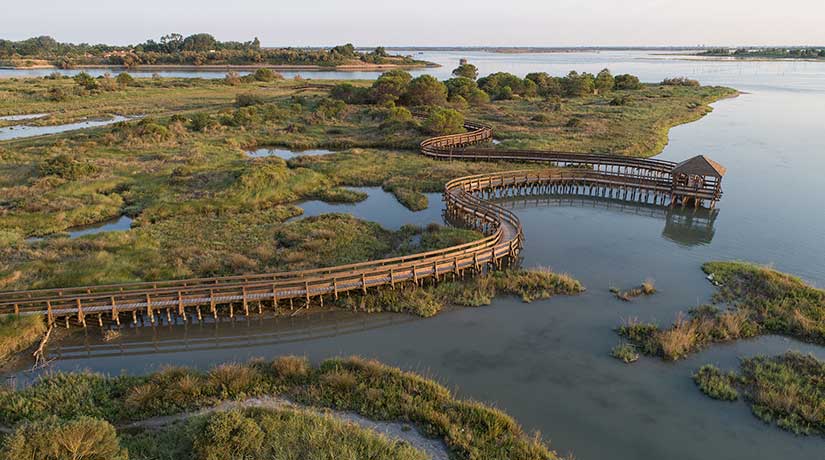
Botanical Garden of Porto Caleri
An untouched corner of nature where you can admire a multitude of bird species, rare species of amphibians and dense vegetation characterized by 220 plants submerged in the pine forest, dunes, ponds, beach and lagoon of Caleri. Walking along the paths of the botanical garden will make you breathe in the scents of nature and bring home memorable photos of a unique landscape.
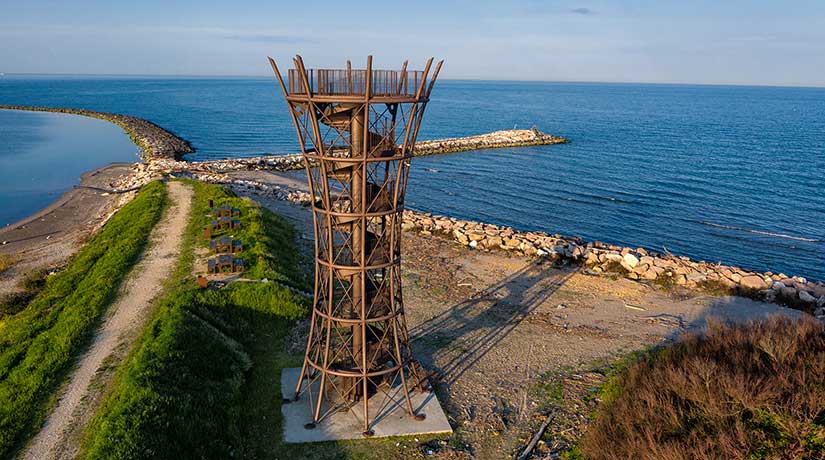
Viewing Tower of the Adige mouth
Panoramic steel tower, 16 meters high and accessible at the end of the Adige cycling trail right. From the top you can see the exact point where the river meets the sea, the mouth of the Adige River on one side and the Adriatic Sea on the other. At the base of the structure are some wooden tables and benches ideal for a nice picnic. It has been considered among the 10-best works in the Veneto region.
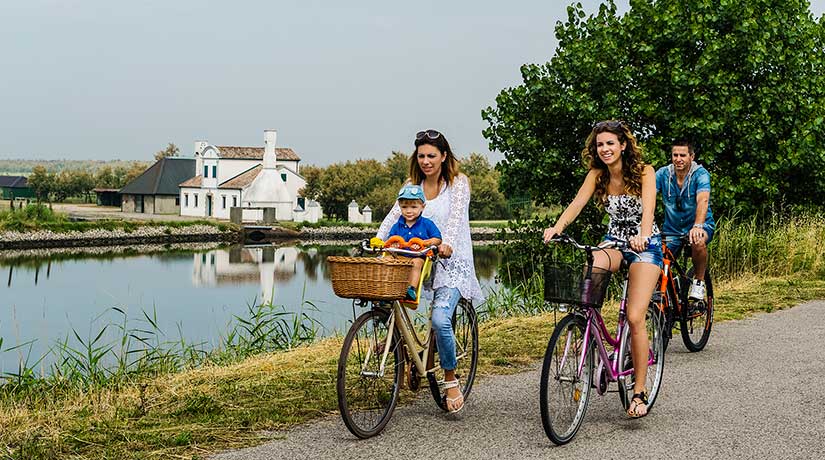
Via delle Valli
Via delle Valli is a nature trail of about 12 kilometers that allows you to admire, better by bike, a landscape of land, water and uncontaminated nature. Along the way you can see fishermen’s wooden huts and so-called “casoni di valle”, former manor houses and now comfortable places to stay frequented during the hunting season.
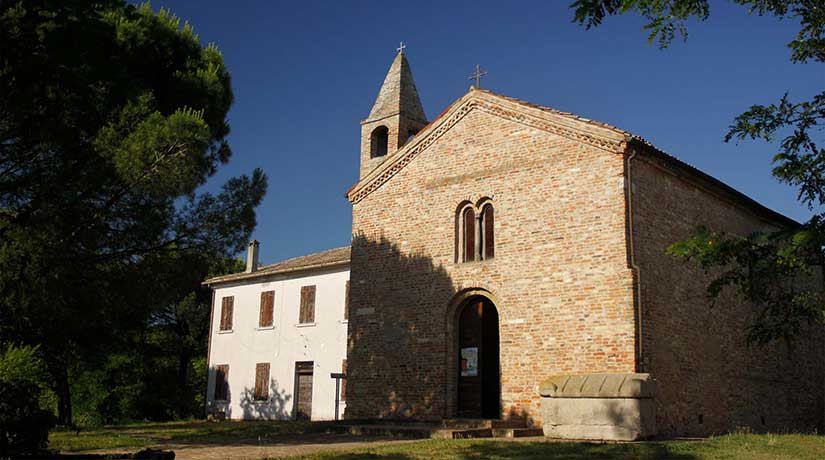
A dive into history
The San Basilio Cultural Tourist Centre houses inside finds found during archaeological excavations carried out in San Basilio between the late 1970s and early 1980s and displayed in three showcases. In addition, a precious sarcophagus, several amphorae and a series of panels tell in a simple way the story of the evolution of the Po Delta and the rich history of this town, which is a true concentrate of history. A millenary church in Romanesque style and, not far away, open archaeological excavations enrich the locality of San Basilio, which thus becomes an interesting crossroads for bike tours, river excursions or thematic routes, also for the presence of fossil dunes and the remains of the Dune cordon, testimony to the ancient coastline.
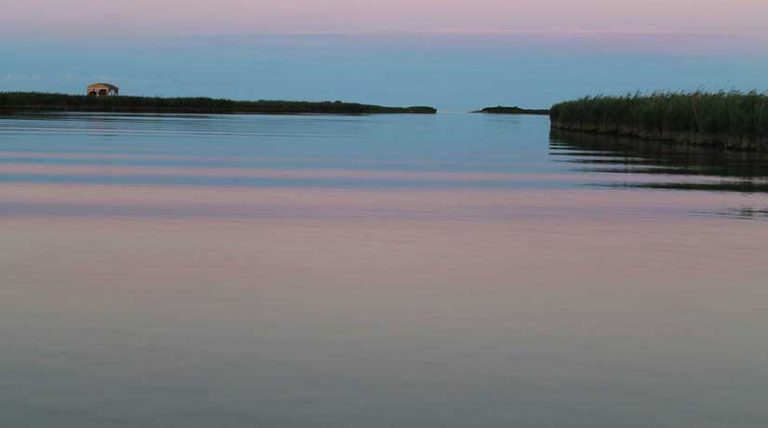
Via Delle Valli Sud
The best way to fully understand all the facets of the Delta is to cycle. Among the many options offered by the Delta Po Park, the most beautiful is undoubtedly the Via delle Valli. An itinerary that starts from the Adige and reaches the Po di Maistra and is divided by the Po di Levante, which can easily be crossed by ferry (operates a one-hour notice +39 329 8607630) that connects Albarella to Porto Levante. Along the path, which stretches above and below the dike that separates the lagoons from the fishing valleys, you can see “casoni di valle” (valley huts), fishermen’s cabins and the many species of birds that frequent these environments, rich in history, nature and traditions.
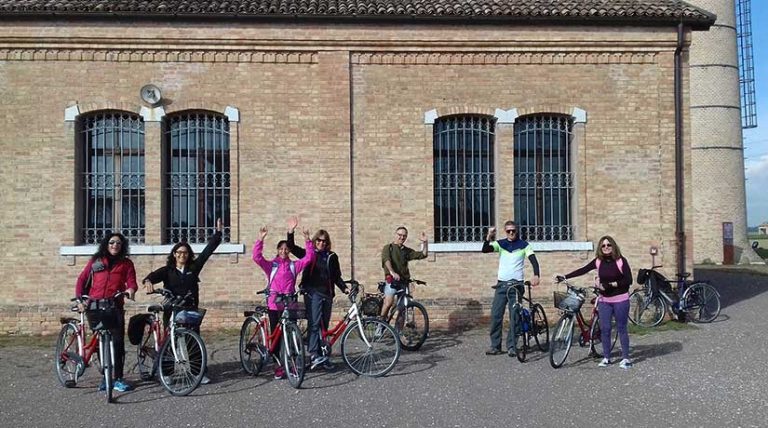
Museum of Environmental Sanitation
The Ca’ Vendramin Regional Environmental Sanitation Museum is the place where you can better understand the interaction between man and environment in the Po Delta. The early 20th century hydroelectric power station, the pivot on which the great Ariano island sanitation enterprise revolved, was abandoned in the mid-1960s due to subsidence. Inside there are not showcases and archaeological finds, but boilers, steam pumps, electric cabins, workshop tools and a beautiful exhibition that tells in an extensive and detailed way about man’s effort and ingenuity in transforming the landscape of the Delta, which changed the barren and uncultivated lands into fertile and hospitable ones.
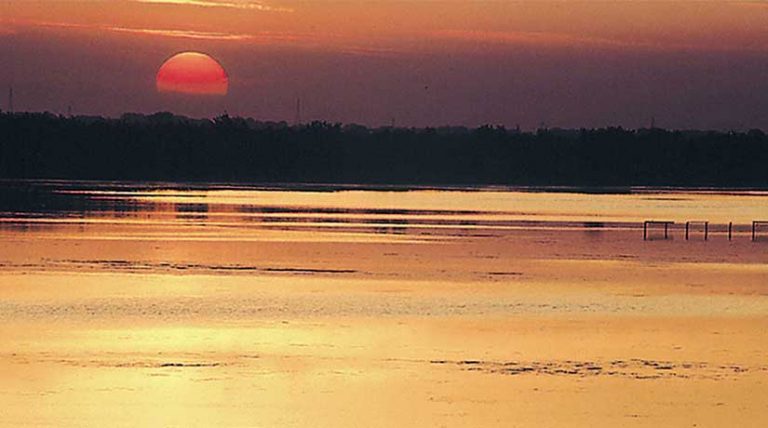
Via Delle Valli Nord
The best way to fully understand all the facets of the Delta is to cycle. Among the many options offered by the Delta Po Park, the most beautiful is undoubtedly the Via delle Valli. An itinerary that starts from the Adige and reaches the Po di Maistra and is divided by the Po di Levante which can be easily crossed by ferry (operates with a one hour notice +39 329 8607630) that links Albarella with Porto Levante. Along the path, which stretches above and below the dike that separates the lagoons from the fishing valleys, you can see “casoni di valle” (valley huts), fishermen’s cabins and many species of birds that frequent these environments, rich in history, nature and traditions.
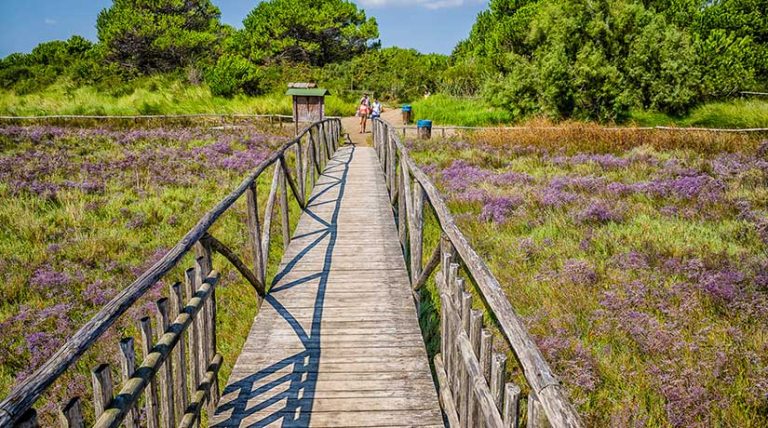
Botanical Garden
The Coastal Botanical Garden of Porto Caleri is located in the northernmost part of the park, on the south side of the coast of Rosolina Mare and covers about 24 hectares. Created by the Regional Forest Service in 1990 in a SCI (Site of Community Importance) area in order to preserve a unique natural setting of considerable scientific interest, it soon became the most beautiful of the oases of the Delta Park. A visit to the Coastal Botanical Garden can be made by following three different paths that lead to the different environments that make it up: the short one, which passes through the pine forest, an intermediate one, which passes through the dunes and down to the beach, and a longer one, which includes the wetland area.
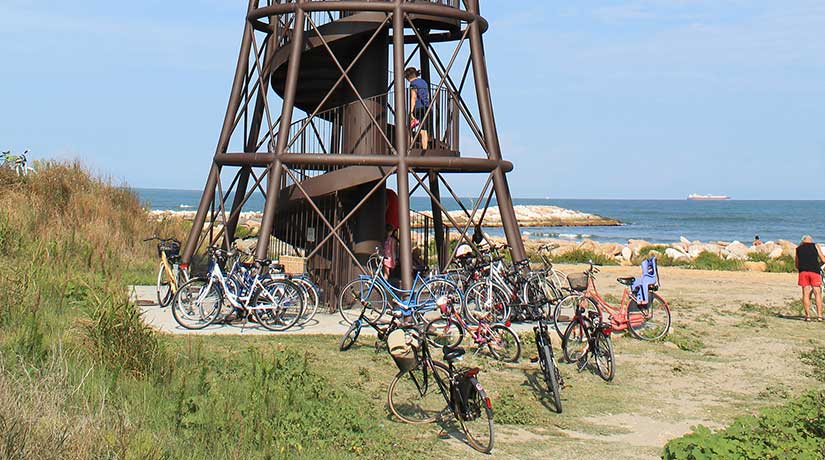
Adige River mouth
The mouth of the Adige River has become one of the most popular destinations on the coast of Rosolina Mare. Once frequented only by fishing enthusiasts and those who preferred the “natural” sea, since the tower marking the end of the cycle path was built, the Destra Adige has become a destination for pedestrians and cyclists alike, after crossing the northern part of the pine forest of Rosolina Mare or after the last kilometers of the cycle path, climb the 84 steps leading to the top of the panoramic tower and offering a view that, in many cases, goes from the mouth of the river Po and the sea to the Euganean and Alpine hills.
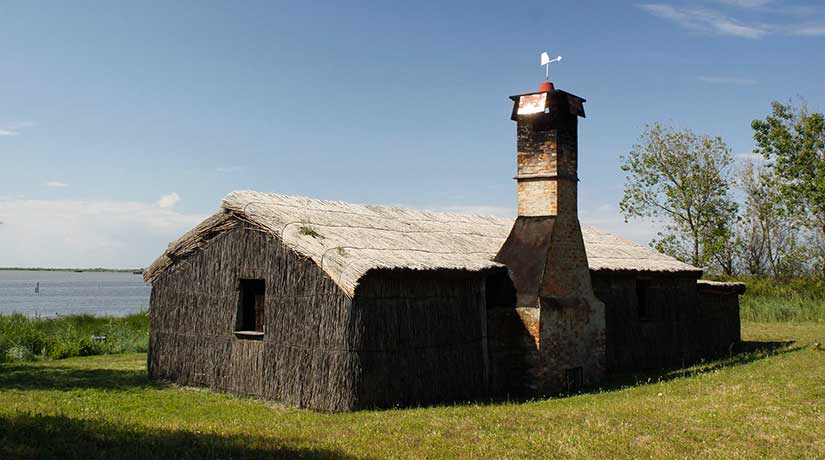
Scanno Boa
Scanno Boa represents the soul of the Delta, the Genius Loci (Spirit of the Place) of this land is undoubtedly on the island, as is excellently narrated by the writer Antonio Cibotto, in the typical houses’ reed in these places, the first dwellings of the inhabitants of the Delta. To reach it (Scanno Boa), you have to cross the Basson Lagoon, which is getting shallower and shallower due to the land cover that occurs year after year because of the river. The landscape of these young lands has been shaped for some time now by extensive reed beds and numerous rice fields. Today, climate change is putting these areas at serious risk of disappearing in a few decades.
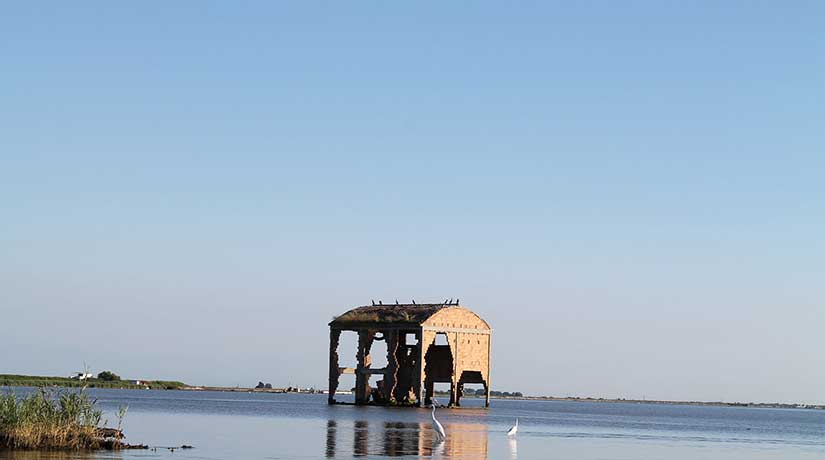
Ring of the Virgin
One of the most beautiful routes to discover the Po Delta by bike is the Ring of the Virgin, an itinerary of variable length, from 40 to 70 km to travel in full or in reduced form depending on the feet, which tells in a complete way the story of the evolution, history, economy and extraordinary nature of the Po Delta Park. Shortly after departure (it is recommended to do it from Ca’ Tiepolo) is the Regional Sanitation Museum. After the visit, you can choose to walk along the banks of the Po di Goro or the Po della Donzella, in both cases immersed in rural tranquility. Once in Santa Giulia, walk to the mouth of the river and then take the scenic road that runs along the Sacca degli Scardovari. Once in the Ca’ Mello oasis, crossing the rice fields, you can quickly reach Ca’ Tiepolo or continue towards Scardovari and Barricata. From here running (where possible) along the banks of the Po di Tolle you can return after 20 kilometers to Ca’ Tiepolo.
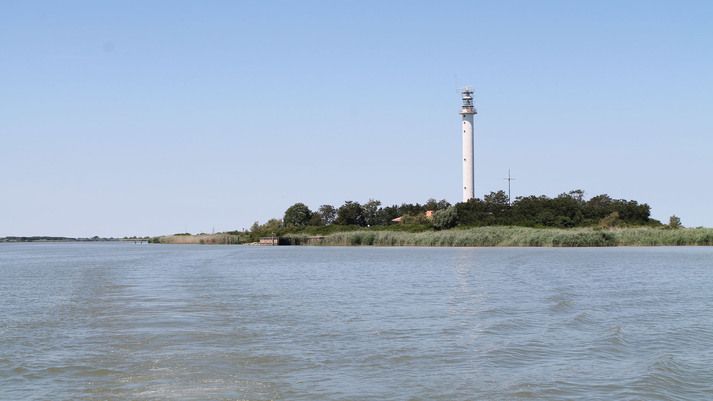
La Grande Foce
The best way to get to know the Po Delta and understand how it was formed is to sail the last stretch of the main branch and get to where the river meets the sea. The Po Gorge is characterized by the majesty of the river which, here already tired, brings its weight of not only water but also sand, mud and clay to the sea which receives them and brings them back to land, creating thin sandy tongues that have slowly become the beaches on the coast of the Delta Park. Here is one of the symbols of the Delta: The lighthouse at Punta Maistra, full of history and poetry that alone stands out and points sailors to the end of the river.
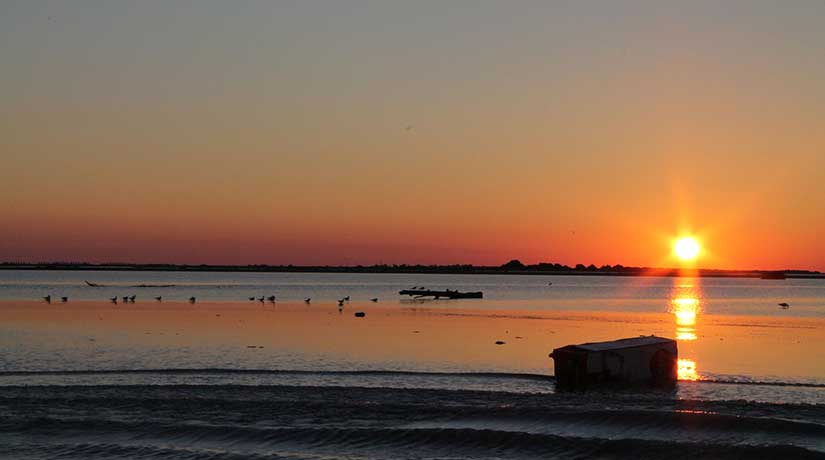
Aperitif at Sunset
In summer, the boat trip on the Caleri Lagoon is enriched with a precious element. Added to the beauty of the scenery is the feeling of sailing when the sun is about to set. The light becomes warmer, the birds are more easily visible, and the salt marshes show their lemongrass and September flowers. But the surprise increases when, once you reach the caves fishermen, discover the 0 km appetizer meal. The products of the land processed by farmers and shepherds, accompanied by a glass of wine, offer the opportunity to discover the various valuable, very tasty and authentic products of the Delta Park.
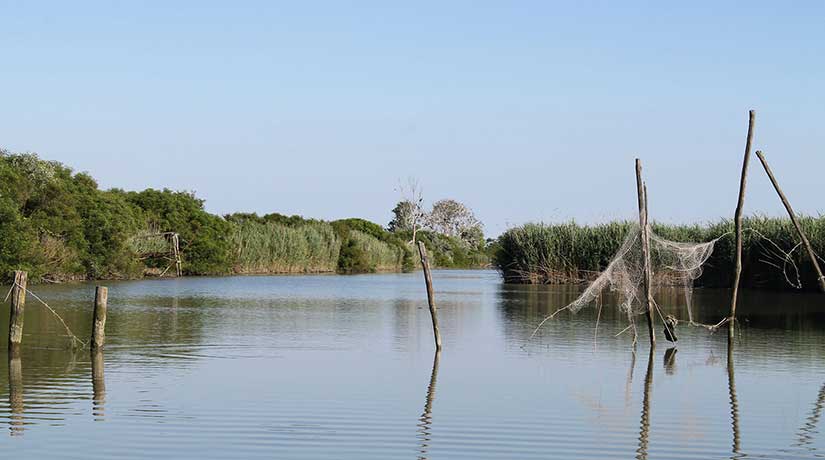
Po di Maistra
Po di Maistra is the smallest, but for this very reason the most natural and suggestive branch of the Po Delta, where the hand of man can be seen the least. Its course is characterized by rich and varied vegetation: willows, white poplars, ash trees that host a variety of birds. It is also for this reason that it has become one of the most popular places for birdwatchers. Along the river there are several meadows (areas of river expansion), one of which, the Ca’ Pisani meadow is one of the most beautiful oases of the park, the ideal habitat for many species of birds, such as blue gulls, robins and all species of lizards.
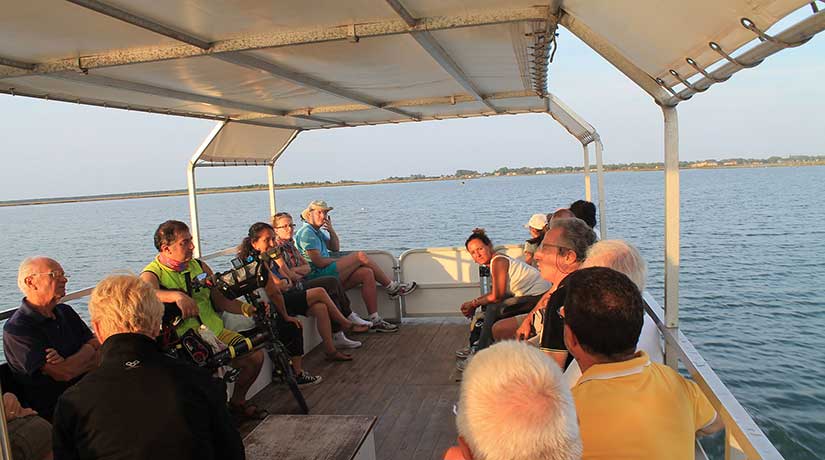
Bike & Boat al Bacucco
At its mouth, the Po della Donzella branches off the Po Morto, so called because in the past its mouth was completely blocked and the water reached the sea through a “paradel”, a channel that linked the Po Morto to the Po di Goro. But the Po Delta is a land of very uncertain and constantly evolving boundaries. A sea storm blocked the connection with the Po di Goro and, thanks to the excavation of the sandbank that closed the mouth, the Po morto resumed bringing water into the sea. Between the two branches lies one of the most authentic areas in the entire Po Delta: the Bacucco oasis, a stretched bed of reeds interrupted from time to time by clear waters, an area that was used for hunting because it was home to a multitude of ducks and many other birds, which here, in addition to their ideal habitat, find a safe haven.



